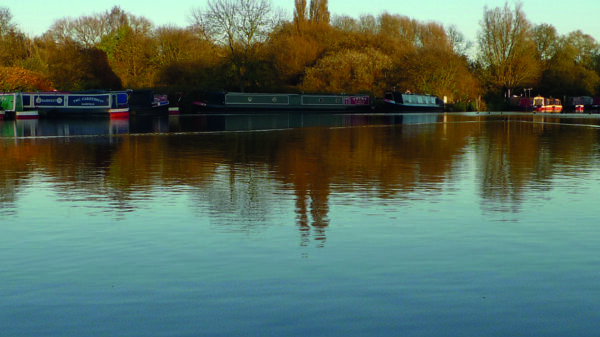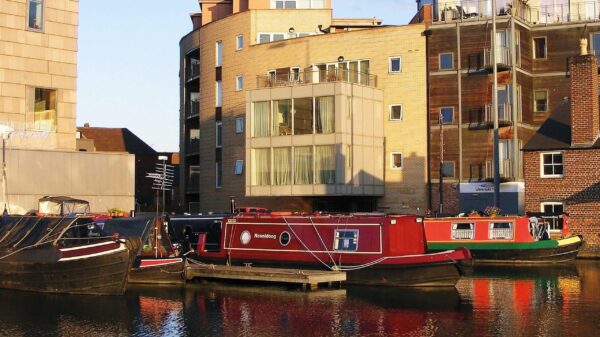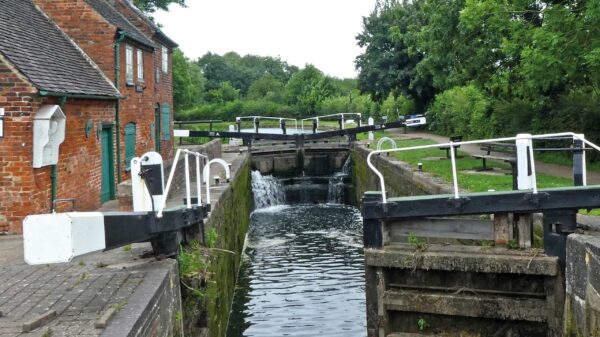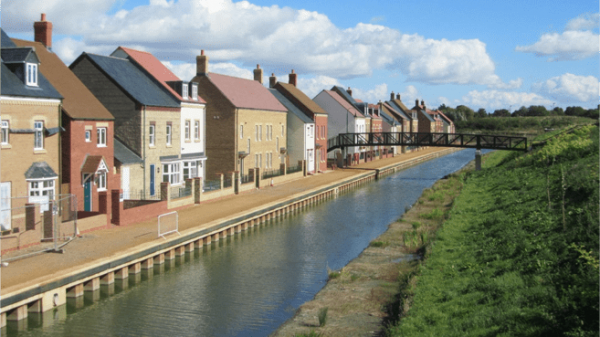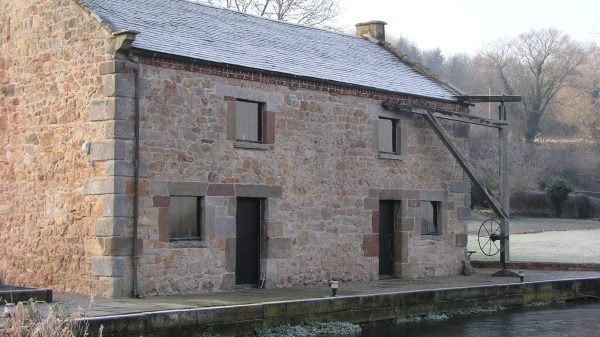Restoration Hub > Advice & Support > Introduction to the Planning Toolkit > How to engage with the planning system – Practical Advice
How to engage with the planning system – Practical Advice
IWA & CRT Planning Workshops 2016 – Practical Advice Notes
Development Plans
How to register your interest
Your organisation may already have arrangements in place to be consulted on planning matters. If not, then there are two ways this can be initiated or supplemented.
Statement of Community Involvement
Each Planning Authority produces a Statement of Community Involvement (SCI) which lists Statutory and General Consultees including a category something like “Canal owners and navigation authorities” which will include CRT. Some councils may include IWA and canal societies under that entry, but more usually your organisation will be included in a list of ‘Other Consultees’ or ‘Community Groups’ or similar. There may be separate lists for Development Plan consultations and Planning Application consultations and you need to be included in both. There is a formal process of consultation on the contents of the SCI, which may only be updated every few years when a new stage of the Local Plan is commenced. Note that some councils only include general categories in the SCI and keep a separate database which can be updated at any time – it is important to check how your local authority works and make sure we stay on the lists.
However, you can write at any time to the relevant Councils planning department requesting consultation on their Local Plan and giving contact details, at the same time explaining which planning applications you would like to be consulted on.
Consultations
If all goes well you should receive an email or a letter from the Council alerting you to each of the consultation stages of the various Local Development Plan Documents that make up their Development Plan. It is important to engage with the system as early as possible at the stage when a range of options are being considered and the content can be more readily influenced. As a Local Plan progresses from Issues & Options to Consultation to Pre-Submission stages it becomes progressively harder to make major changes, although some improvements can still be achieved if soundly argued right up to the final Examination stage.
The statutory consultation period is 6 weeks, although it may be a week or two longer around Christmas. However, the closing date must be adhered to, particularly in the later consultation stages, as late objections will not be “duly made” and will not be considered by an Examination Inspector.
How to access adopted and emerging plans
Development Plan Documents
Local Development Plan documents can be large files which need a good internet connection to download. Reading them on screen can be tiresome, especially if they contain large, detailed, coloured maps and tabulations, but Councils now usually charge significantly to send you a printed copy. However, you might consider visiting your local council office or local library, if convenient, to read a print copy there and make some notes. The Contents page will help you navigate to relevant sections, and those likely to be of most interest will include housing and employment land allocations, and chapters dealing with environment, recreation and tourism, and transport in the case of larger freight waterways. You may also need to consider some Supplementary Planning Documents.
However, the ease of access with an electronic copy and the ability to search it for key words and to highlight sections for future reference is a great advantage. Most pdf reader software will let do a ‘Find’ search for “canal” or “river” to quickly access relevant passages, although you should also check for other key words such as “waterway”, “towpath”, “marina” and possibly “port”, “wharf” and “wharves” as appropriate. But to set any waterways related comments in context, and to identify where the waterway should have been referenced but isn’t, you will need to read through much of the document and this can take some hours, not to mention the time then needed to write your response.
How to respond
The Development Plan documents will be available on the website as downloadable pdf files, although some Councils also use ‘Limehouse’ software to display it section by section. This allows the on-line addition of comments for those that register and log in, and is progressively updated to allow you to read the comments that others have made. If you use this facility, unless your response to a particular section is very brief, it is generally best to compose it off line and then paste it in when you have spell checked it and are satisfied it is complete. It goes without saying that you should always keep a copy of your responses.
The Council may instead provide a Response Form that asks for comments on particular questions, which may or may not be relevant to what you want to say. If this isn’t convenient to use then you can respond by letter or email in a format that best suits your case and let the planners work out how to record your comments against their criteria.
At the final Submission stage of a local plan document any objections are restricted to matters of “Soundness” and legal compliance and will have to follow the set format. The subsequent Examination in Public considers only those key matters identified as important by the Inspector, and is an informal discussion which he leads with invited participants to help him judge the appropriateness and effectiveness of the plan. There is still scope for both Minor and Main Modifications at this stage but you would need to be well prepared with significant evidence to achieve this.
Waterway Policies
Plans may include policies specific to waterways, covering waterside development, marinas, freight or supporting restoration projects, and the development control and site allocations policies for housing and employment or transport may affect waterways in a variety of ways. Whilst it is helpful to support beneficial policies your main concern will undoubtedly be to object to those which may adversely affect the waterway or its environment and/or to suggest changes to remove or mitigate such effects. In some cases, you may consider that the problem is the absence of a suitable policy supporting beneficial waterway development or restoration. Instead of just commenting in general terms it can be particularly effective to suggest the exact wording of a new or changed policy, or of the explanatory text, which also avoids some of the misunderstandings that can occur when this is written by planners unfamiliar with waterways. Examples of well written policies adopted by other planning authorities can assist with this.
Engaging with Neighbourhood Plans
Neighbourhood Plans are now an established part of the planning system although coverage is rather patchy, depending on Parish Councils or other local groups taking the initiative to prepare them. The LPA will inform their consultee base of the proposal to make a Neighbourhood Plan and the area to be covered, but you may hear nothing further from them until the plan is complete and put on public consultation. Meanwhile, there will have been local consultation events, workshops, exhibitions, etc. advertised in the neighbourhood area, but which may have escaped your attention unless you live there. If the plan area includes waterways it is better to engage with these earlier stages to influence the emerging policies and allocations in favour of protecting and enhancing the waterway environment rather than seek to change the final document. How best to do this is something that we can discuss and compare experiences on later.
Other Planning Consultations
Many canals are Conservation Areas and LPAs are responsible for updating Conservation Area Appraisals. The best of these include maps and photographs with detailed descriptions of the canal’s heritage structures, and can benefit from information supplied through consultation with IWA branches and local canal societies.
As well as the plans produced by Districts and Boroughs, in those areas without Unitary Authorities the County Councils are responsible for Minerals Plans, Waste Plans and Local Transport Plans, as well as their own infrastructure such as roads. The consultation procedures for Minerals and Waste Plans mirrors that for Local Plans, with a Statement of Community Involvement, although their procedure for consulting non-statutory bodies on minerals and waste planning applications is often less effective and interested parties need to regularly check their website lists.
Other organisations producing plans which can impact waterways include the Environment Agency. Their River Basin Management Plans, Management Catchment documents and Flood Risk Management Plans are based on river catchments and identify issues and actions such as abstractions, water quality in rivers and canals, and the impact of canal restoration schemes. The Water Framework Directive requirements can cause difficulties for canal or river restorations where navigation has not been considered and waterways have not been designated as Artificial or Heavily Modified water bodies. By engaging with EA’s consultations you may be able to supply information, correct misconceptions or otherwise help improve these documents to better favour navigation.
Planning Applications
How to find out about them
Statement of Community Involvement
As explained earlier, your group should be formally listed as a consultee in each Council’s Statement of Community Involvement (SCI), but you can write at any time to relevant planning departments explaining which planning applications you would like to be consulted on and giving contact details. Many Councils use CRT’s criteria for selecting planning applications relevant to the waterways and may follow the same system with IWA and canal societies. However, that can sometimes result in too many consultations for developments some distance from the waterway, especially in urban areas, in which case you may be better specifying “Any application directly affecting, immediately adjacent to, or likely to be prominently visible from a waterway” or words to that effect. You may also need to define which waterways in a particular Council area are of interest to you, including restoration projects and excluding other un-navigable watercourses.
However, being registered for particular consultations doesn’t guarantee that you will receive them. Because applications affecting waterways are only a small proportion of the total, it is possible for your interest to be overlooked on occasions. Also, planning officers come and go and some may not be familiar with your group, or have limited understanding about waterways. Direct consultation can therefore be patchy, with some Councils being better than others. But there are several other ways to ensure that you know about relevant planning applications.
Weekly Lists
Nowadays, the most reliable way of checking for new planning applications, and also finding out about decisions, is to check each relevant planning authority’s website on a regular basis. Ideally you should get into a routine of doing this once a week, and Monday is a good day as many Councils produce a retrospective weekly list, which may be posted on their website over the weekend or on Monday morning. Alternatively, there will generally be a Search facility where you can specify a range of dates to cover the period since you last checked. Some Councils will still email their weekly list to you, although you should be aware that there may be differences from the on-line version if one records applications received in the calendar week and the other lists applications registered, as registration may take a few days, or longer.
If you save each council’s website application search and/or weekly list page in a folder in your Favourites or Bookmarks list, along with the CRT site where relevant, it is easy then to check each site for new entries weekly or since your last check. Remember that in non-metropolitan areas and those without unitary authorities the County Councils are also planning authorities for Minerals and Waste applications.
Newspapers
Another useful source of information on planning applications is local newspapers, including the free weekly ones, which sometimes publish a list of applications or refer to newsworthy applications in articles. Major developments, applications not in accordance with the development plan, applications affecting Listed Buildings or applications in Conservation Areas, which cover many canals, are often publicised in formal Public Notices in the classified section.
Because newspapers are often very parochial it can help to have members in other parts of the area you cover who will act as your ‘eyes and ears’ and let you know about any particularly important planning applications that you might be unaware of. This can be especially helpful with pre- application exhibitions which are only publicised locally.
Identifying Relevant Applications
You will need a good working knowledge of local geography, and in particular the route of your waterways of interest, to be able to recognise potentially relevant planning applications from their addresses. A to Z map books and a set of waterway guides are useful for checking likely addresses. The Geoproject maps and their successor Heron series are particularly useful as they are drawn to clearly show roads in the vicinity of waterways, although other waterway guides are of course
available. Sometimes it may just be easier to access the planning website for an application and check the map entry, where available, or go to the planning documents and check the Location Plan.
Alternatively, you can use Google Maps or similar to identify locations. Google Earth imagery can be very helpful in reminding you of what a particular section of waterway looks like and indicating how visible an adjoining development may be.
As well as consulting your planning authority websites directly, if CRT is the navigation authority for your waterways you should also look at their website planning notices page. This lists all the applications that CRT has been consulted on, week by week, and has the advantage of pre-selecting applications affecting waterways. CRT also sometimes receive consultations on minor amendments, Reserved Matters, Variation of Conditions, etc. that may not be sent out to all other consultees. However, they also suffer occasionally from missed consultations, so it is best to still check the Council websites as well. (If you notice that CRT are not on the consultee list for a particular application then it may help to let them know).
Large Infrastructure Projects
Nationally Significant Infrastructure Projects are now determined by the Government through a Development Consent Order, advised by the Planning Inspectorate, rather than by the relevant local planning authority. These include large power stations, wind farms, railways, major roads, reservoirs, harbours, airports, large sewage treatment works and rail freight interchanges. Details are available on the National Infrastructure Planning Website. These generally go through a pre-application stage including an informal public consultation conducted through local exhibitions and an Environmental Impact Assessment scoping report consultation. The LPA may notify relevant consultees or you may hear about it through the local press and news reports. Other projects may be authorised through a Transport and Works Act Order and some are authorised by Act of Parliament, e.g. HS2. As always, early engagement is more likely to favourably influence the scheme than objections when it reaches the formal application stage.
Plans & Documents
Planning Application consultations are now mostly sent by email, although a few authorities may still post notification letters. The full set of plans and documents for the application will be available on their website to view and download. You will need a fast internet connection for downloads as some documents can be many megabytes of data. Most documents will be in pdf format. It is rare nowadays for a planning authority to be willing to post you copies and visiting the Council’s office to view plans is not usually practicable.
A drawback of working this way can be the difficulty of reading some large and detailed plans on a small computer screen. Printing off a copy, even at A4 size, can often give better resolution and be easier to read then zooming in and out. A paper copy of the key plans is also useful for passing round your committee members at the next meeting when you are reporting on a response.
Planning application documents vary, but should always include a Location Pan and a drawing of the proposals. Larger development projects may have a Layout Plan or Master Plan, Floor Plans, Sections, Elevations and a Landscaping Plan. Accompanying reports may include a Design & Access Statement, Heritage Statement, Traffic Assessment, Contaminated Land Report, Flood Risk Assessment, Wildlife Surveys, Environmental Statement, etc. With large applications some of these can be very substantial documents, running to hundreds of pages of text and appendices. Most websites will identify all the listed plans and documents by title or content but those that just list numerous entries of ‘plans’ for example can be frustrating and time consuming to check.
How to respond
Timescales
The timescale for planning application responses is usually 3 weeks, although a few days may be lost if the consultation is sent by post. In practice applications rarely go to planning committee on the closing date so a later response may be considered. However, as less than 10% of applications are now decided by committee, with the rest being delegated to the Council planning officer, this cannot be relied on without checking first. The expiry date for comments given on the website may be later than in your consultation letter and it is worth noting that a decision cannot be made before that date.
As many waterway groups’ committees will meet only monthly, or less, this means that the majority of planning applications have to be dealt with outside the committee. The planning officer therefore needs to have the confidence of his committee to respond appropriately on their behalf. Most of the responses will be routine but you may sometimes need to inform other committee members by email or phone about anything controversial and seek their views before responding.
Assessment
Assessing a planning application involves checking the location, the type of development, its size, design, landscaping and its overall impact on the waterway or its environment. If it is potentially significant and you are unfamiliar with the location, then a site visit can often help put it in context and help make up your mind whether or not to object or to ask for amendments or conditions. If the site is familiar but you want to check for example how well it is screened by vegetation, then looking at an aerial view on Google Earth may save you a trip, although you should check the date of the photography.
In some cases, it may be helpful to discuss particular applications with other waterway groups, or local or knowledgeable individuals.
If the available application documents appear incomplete or confusing, or the site has a complicated planning history, it can help to speak to the Planning Case Officer. However, they may be available by phone only at certain times on certain days and you will often need to arrange a call back. If discussions with the professional planners are kept short, relevant and polite then you will generally find them to be helpful. Whilst they may be reluctant to express opinions they will always be prepared to discuss the facts and may indicate what their decision or recommendation is likely to be. Maintaining good relations with the planners will help ensure that your views are taken into account.
Responding
Your response may be by letter, by email or on-line. For a quick ‘no objection’ response or one with only limited comments an on-line or email response is adequate. For more significant responses an email may suffice but when making major objections, or indeed supporting a beneficial development, a more formal letter may carry more weight with the planning officer. However, a letter no longer needs to be printed and posted but can be submitted as an attachment to a brief covering email.
Such response letters will normally have a standard format; probably in Word software, set out for A4 paper, including your organisation’s logo and standard details, with your name, position, address, phone, email, reference and date. Address it to the department head for attention of the Case Officer, or directly to them if appropriate. Head the text with the application reference, proposal and location, as on the consultation letter. Thank them for the consultation. Briefly state your group’s aims and objectives and summarise why the particular waterway is important. After these standard introductions you can then deal with the details of the specific application and, for any lengthy responses, finish with a summary of your comments.
All response letters should be copied to your committee Chairman for information when submitted, and a written summary of all actions taken presented at each committee meeting. The meeting also gives an opportunity to show any particularly important or interesting plans to the committee for their information.
Objections & Comments
When formulating responses from IWA Branches it helps to be aware of IWA’s policy documents and statements which can be found on the website. Other groups may also have policy statements.
Responses to a planning application may be objections, support or just comments. It is best to use the words ‘objection’ or ‘support’ in the letter to make your position clear. If you are ‘not objecting in principle’ but are asking for some amendments or conditions you should be aware that anything critical will usually be classified as an objection, which may give the respondent an opportunity to be heard in any subsequent Appeal Hearing that a supporter does not have.
The objections or comments you make need to be based on material planning considerations in order to be influential. There is no need to copy the professional agents by quoting chapter and verse of national and local planning policy but your remarks should address issues that come within the scope of the planning system. For example, personal comments about individuals or their financial situation are not relevant. Assuming the application is compliant with local plan land use designations, the main issues will often be the details of location, size, design and landscaping. These may be irredeemable leading to a strong objection or they may be capable of improvement to make them acceptable.
The extent to which you refer to issues not directly affecting a waterway is a matter of judgement. It is fair game to cite Green Belt or traffic problems or planning issues away from the waterway as additional reasons for objection but it would be wrong for your group to object to something on such grounds alone.
However, you should be aware that the whole system is heavily biased in favour of the developer with about 90% of applications being approved, and others later approved on appeal. When commenting on planning applications it is sometimes better to accept the inevitability of a development but to ask for reasonable changes and conditions that would make it more acceptable.
Copying & Filing
It is good practice to copy all your replies to your organisation’s chairman. For some of the more significant responses, it is a courtesy to also copy it to an appropriate officer of any associated local waterway society or group. Similarly, with CRT and other navigation authorities, for any applications made by them, or directly affecting them, or where you have suggested contact with or action by them in your response, it is courtesy to copy in their Area Planner. How we can all better communicate is of course a main subject of this workshop.
It goes without saying that you should always retain a copy of the response letter, perhaps printed as well as electronically, along with copies of any plans and documents of particular relevance. Where plans are on websites this can save on paper but be aware that they may be taken off again sometime after the final decision is made. How long you keep paper documents in your filing system depends on your judgement of continuing relevance, and how much space you have !
Outcomes
Decisions
At one time most planning applications were decided by councillors on the planning committee, with guidance from the planning officers, but now more than 90% are determined by the officers with only the major ones, and any controversial ones ‘called in’ by a Councillor, going to the committee.
If decided by the planning committee, there is usually an opportunity for objectors or supporters to address the committee for a few minutes by prior arrangement and this can be influential in some cases.
You may be sent a copy of the decision notice, including conditions, but if not it will be put on the Council website. It helps to have such feedback to see how much notice is being taken of your views and to report back to your committee what the outcome was.
Some applications likely to be refused may be withdrawn before they are determined and perhaps subsequently resubmitted, with or without significant changes. It is also not unknown for developers to submit a second identical or similar application before the first has been decided or when it has been appealed, in order to pressurise the local authority.
Appeals and Inquiries
There is no right of appeal for objectors, but the applicant, if refused, can appeal and a large proportion of those Appeals are then approved by the planning inspectors, although sometimes with conditions. If an application on which you commented is appealed, then you should be notified and given the reference number and address of the Planning Inspectorate to which you can comment further. However, your original comments should be forwarded so you may be content with that.
Most appeals are now decided by written evidence but sometimes with developments of particular significance a Planning Appeal hearing is held which you may wish to attend. These are now mostly informal hearings rather than full formal Public Inquiries and are therefore not quite so off-putting. You can request to be notified by the Planning Inspectorate when a decision is made.
Planning Toolkit
Our use of cookies
We use necessary cookies to make our site work. We'd also like to set optional analytics cookies to help us improve it. For more detailed information about the cookies we use, see our 'Cookie Policy page'.Edit preferences Accept
Privacy Overview
| Cookie | Duration | Description |
|---|---|---|
| __stripe_mid | 1 year | Stripe sets this cookie to process payments. |
| __stripe_sid | 30 minutes | Stripe sets this cookie to process payments. |
| cookielawinfo-checkbox-advertisement | 1 year | Set by the GDPR Cookie Consent plugin, this cookie records the user consent for the cookies in the "Advertisement" category. |
| cookielawinfo-checkbox-analytics | 1 year | Set by the GDPR Cookie Consent plugin, this cookie records the user consent for the cookies in the "Analytics" category. |
| cookielawinfo-checkbox-functional | 1 year | The GDPR Cookie Consent plugin sets the cookie to record the user consent for the cookies in the category "Functional". |
| cookielawinfo-checkbox-necessary | 1 year | Set by the GDPR Cookie Consent plugin, this cookie records the user consent for the cookies in the "Necessary" category. |
| cookielawinfo-checkbox-others | 1 year | Set by the GDPR Cookie Consent plugin, this cookie stores user consent for cookies in the category "Others". |
| cookielawinfo-checkbox-performance | 1 year | Set by the GDPR Cookie Consent plugin, this cookie stores the user consent for cookies in the category "Performance". |
| CookieLawInfoConsent | 1 year | CookieYes sets this cookie to record the default button state of the corresponding category and the status of CCPA. It works only in coordination with the primary cookie. |
| PHPSESSID | session | This cookie is native to PHP applications. The cookie stores and identifies a user's unique session ID to manage user sessions on the website. The cookie is a session cookie and will be deleted when all the browser windows are closed. |
| Cookie | Duration | Description |
|---|---|---|
| _fbp | 3 months | Facebook sets this cookie to display advertisements when either on Facebook or on a digital platform powered by Facebook advertising after visiting the website. |
| _ga | 1 year 1 month 4 days | Google Analytics sets this cookie to calculate visitor, session and campaign data and track site usage for the site's analytics report. The cookie stores information anonymously and assigns a randomly generated number to recognise unique visitors. |
| _ga_* | 1 year 1 month 4 days | Google Analytics sets this cookie to store and count page views. |
| _gat_gtag_UA_* | 1 minute | Google Analytics sets this cookie to store a unique user ID. |
| _gat_UA-* | 1 minute | Google Analytics sets this cookie for user behaviour tracking.n |
| _gid | 1 day | Google Analytics sets this cookie to store information on how visitors use a website while also creating an analytics report of the website's performance. Some of the collected data includes the number of visitors, their source, and the pages they visit anonymously. |
| CONSENT | 2 years | YouTube sets this cookie via embedded YouTube videos and registers anonymous statistical data. |
| Cookie | Duration | Description |
|---|---|---|
| test_cookie | 15 minutes | doubleclick.net sets this cookie to determine if the user's browser supports cookies. |
| VISITOR_INFO1_LIVE | 5 months 27 days | YouTube sets this cookie to measure bandwidth, determining whether the user gets the new or old player interface. |
| YSC | session | Youtube sets this cookie to track the views of embedded videos on Youtube pages. |
| yt-remote-connected-devices | never | YouTube sets this cookie to store the user's video preferences using embedded YouTube videos. |
| yt-remote-device-id | never | YouTube sets this cookie to store the user's video preferences using embedded YouTube videos. |
| yt.innertube::nextId | never | YouTube sets this cookie to register a unique ID to store data on what videos from YouTube the user has seen. |
| yt.innertube::requests | never | YouTube sets this cookie to register a unique ID to store data on what videos from YouTube the user has seen. |

